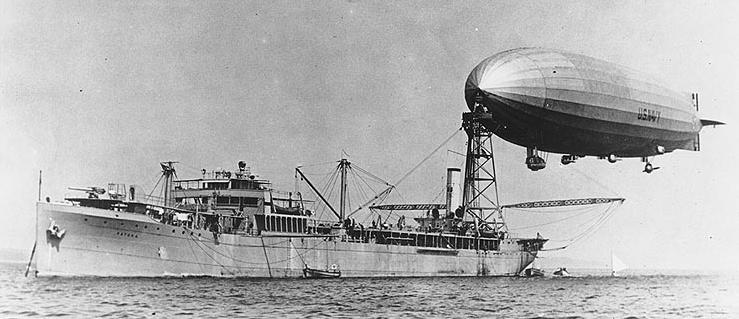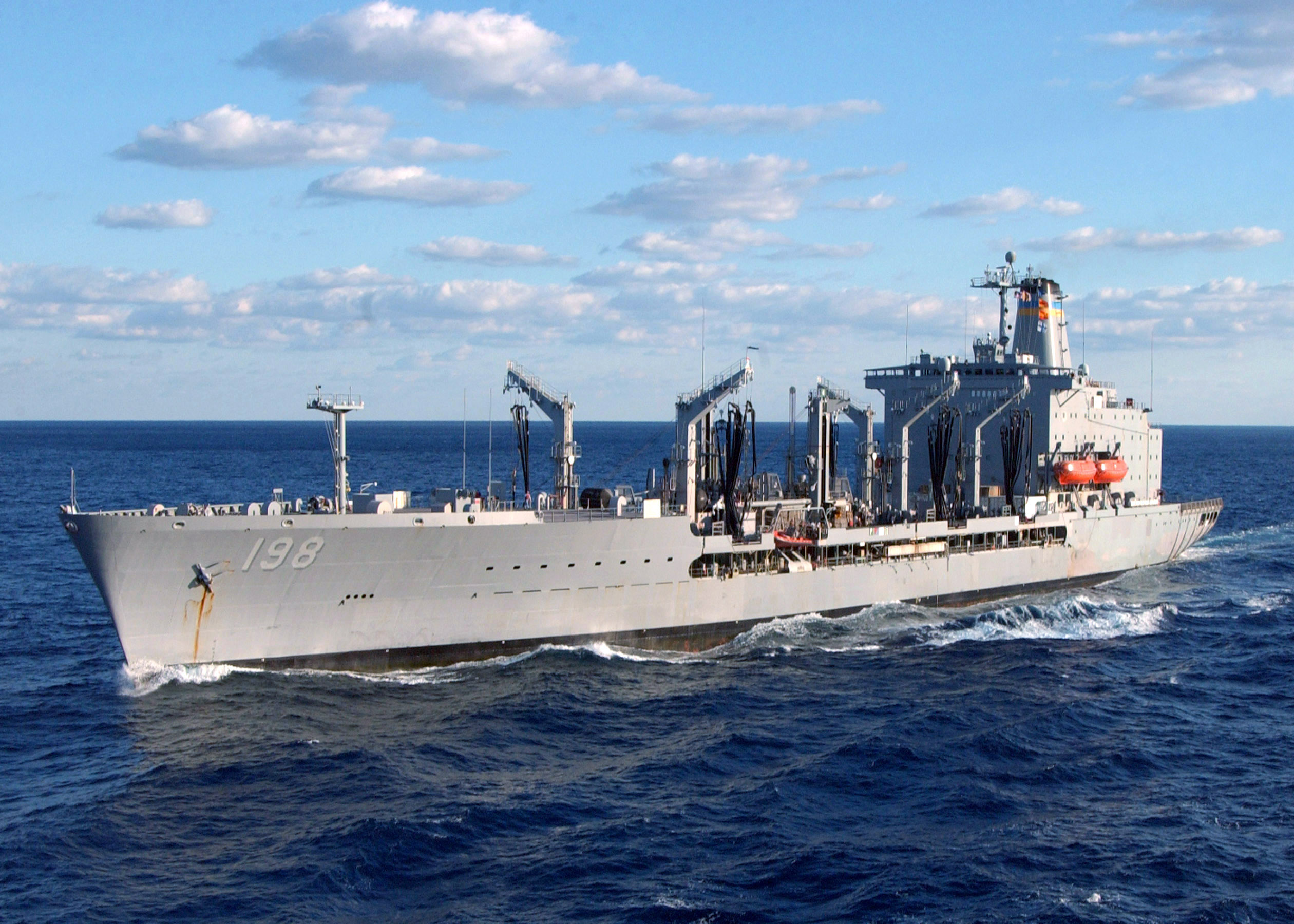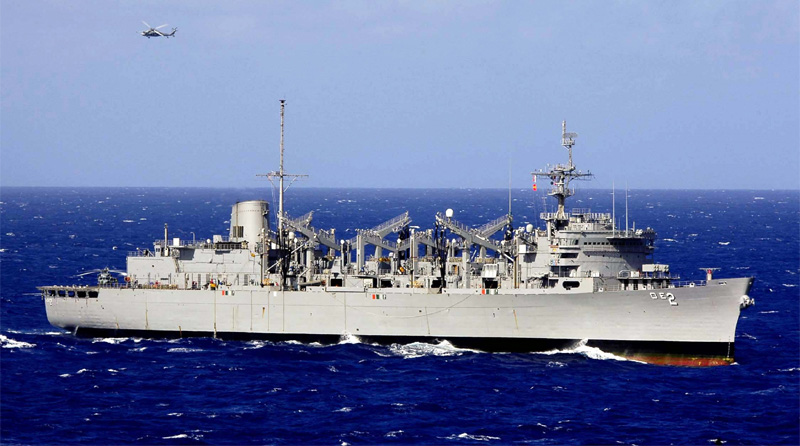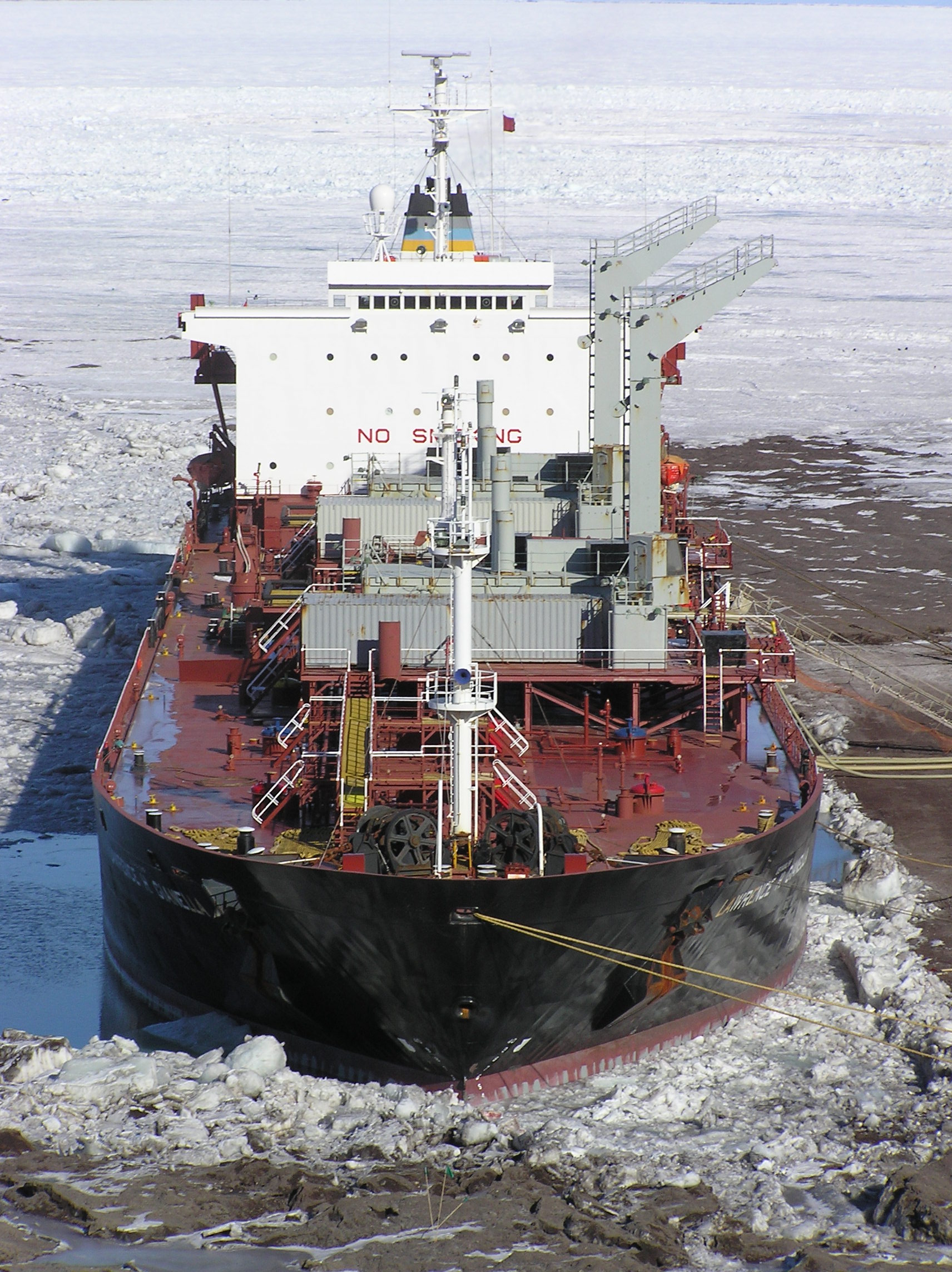Fleet Oilers (AO)
''Note: tonnages are given in naval light/full load displacement''''Arethusa''
''Arethusa'' was built in Britain 1893 as the SS ''Luciline'' and was purchased in 1898, serving originally as a water carrier. In 1910 she was converted to carry fuel oil, mostly in support of destroyers: she thus became the''Kanawha'' class
 The Navy's first fuel ships designed and built as oilers, rather than colliers, the -class comprised two ships commissioned just before
The Navy's first fuel ships designed and built as oilers, rather than colliers, the -class comprised two ships commissioned just before ''Sara Thompson'' and ''Robert L. Barnes ''
Wartime acquisitions of civilian tankers. ''Sara Thompson'', 2690/5840 tons, was also British-built, in 1888 as the SS ''Gut Heil'', and was purchased in 1917. ''Robert L. Barnes'', a 1630/3850-ton Great Lakes tanker, was built in 1914 and purchased in 1918. With the advent of the Navy's new hull-numbering system in 1920 they were designated AO-8 and AO-14. *, ex-ID-3148, later SS ''Sarangani,'' captured at Manila 1941 and renamed ''Sanraku Maru''; sunk by USS ''Trout'' off Borneo, 1943 *, ex-ID-3088, ex-AK-11, later AG-27, captured at Guam 1941; later SS ''Fortune'' and M.T.S. #2''Cuyama'' class
 The ''Cuyama''-class ships were improved ''Kanawha''-class ships, displacing 5,723/14,500 tons and with the bridge moved to the midships position, which entered service during World War I. ''Cuyama'' was the first oiler to refuel a large ship underway by the broadside method, the cruiser ''Omaha'' in 1924. Unlike the succeeding ''Patoka/Alameda'' group, the ''Kanawha'' and ''Cuyama''-classes moderate 14-knot speed made them useful in the early days of
The ''Cuyama''-class ships were improved ''Kanawha''-class ships, displacing 5,723/14,500 tons and with the bridge moved to the midships position, which entered service during World War I. ''Cuyama'' was the first oiler to refuel a large ship underway by the broadside method, the cruiser ''Omaha'' in 1924. Unlike the succeeding ''Patoka/Alameda'' group, the ''Kanawha'' and ''Cuyama''-classes moderate 14-knot speed made them useful in the early days of ''Patoka'' class
 In 1917 the US Navy ordered twelve tankers, eight of them
In 1917 the US Navy ordered twelve tankers, eight of them ''Kaweah'' class and ''Alameda''
 These were the remaining four 1917 program oilers, 5450/14,500-ton tankers built to
These were the remaining four 1917 program oilers, 5450/14,500-ton tankers built to ''Cimarron'' class (1939)
The''Chicopee'' class
 In January 1942 the Navy moved to acquire two tankers then building for Standard Oil of New Jersey, the 5800/21,800 ton ''Esso Trenton'' and ''Esso Albany.'' These ships although not a Maritime Commission design were in fact very similar to the T2-A type commissioned as the ''Mattaponi''-class, having been ordered by Standard Oil as replacements for the previously-requisitioned T3s ''Esso Albany'' (USS ''Sabine'') and ''Esso Trenton'' (USS ''Sangamon''), and at 17+ knots were the fastest single-screw oilers in the Navy.
*
*
In January 1942 the Navy moved to acquire two tankers then building for Standard Oil of New Jersey, the 5800/21,800 ton ''Esso Trenton'' and ''Esso Albany.'' These ships although not a Maritime Commission design were in fact very similar to the T2-A type commissioned as the ''Mattaponi''-class, having been ordered by Standard Oil as replacements for the previously-requisitioned T3s ''Esso Albany'' (USS ''Sabine'') and ''Esso Trenton'' (USS ''Sangamon''), and at 17+ knots were the fastest single-screw oilers in the Navy.
*
*
''Kennebec'' class
 The second large oiler class built during World War II was the . These 16 ships were of the single-screw Maritime Commission type T2 (5580/21,000t, 16.5kt), larger T2-A (5880/21,750t, 16.5kt) and similar but somewhat slower T3-S-A1 (5630/21,000t, 15.3kt).
Type T2:
*
*
*
*
*
*
Type T2-A (''Mattaponi'' class):
*
*
*
*
*
Type T3-S-A1 ( ''Chiwawa'' class):
*
*
*
*
*
The second large oiler class built during World War II was the . These 16 ships were of the single-screw Maritime Commission type T2 (5580/21,000t, 16.5kt), larger T2-A (5880/21,750t, 16.5kt) and similar but somewhat slower T3-S-A1 (5630/21,000t, 15.3kt).
Type T2:
*
*
*
*
*
*
Type T2-A (''Mattaponi'' class):
*
*
*
*
*
Type T3-S-A1 ( ''Chiwawa'' class):
*
*
*
*
*
''Big Horn'' and ''Victoria''
Gulf Oil's 1936 ''Gulf Dawn'' was requisitioned in April 1942, renamed ''Big Horn'' and nominally designated AO-45; in fact she was modified into a''Suamico'' class
 The third large oiler class built during World War II was the ''Suamico''-class. These 5730/21,880-ton oilers were of the MARAD Type T2-SE, differing from the ''Kennebec''-class ships principally in having turbo-electric drive, a consequence of a chronic shortage of reduction gearing. The T2-SE-A2 ''Escambias'' subclass had more powerful engines and were markedly faster than the -A1s. 30 of these oilers were ordered, but three of them were canceled before their completion; two others were converted into water distillation ships (AW) and one into a water tanker. One of these oilers sank in 1947, and a second in Military Sealift Command (MSC) service in 1972. Some of the ''Escambias'' were later transferred to the US Army and used as mobile electric power plants in Vietnam. The T2-SE-A3 (''Cohocton'') subclass were mostly canceled, but would have differed from the A2s only in being built from the start with UNREP gear rather than being converted by the Navy.
Type T2-SE-A1:
*
* , later T-AOT-50
*
* , later T-AOT-67
* , later T-AOT-73
*
* , later T-AOT-75
* , later T-AOT-76
* , later T-AOT-77
* , later T-AOT-78
* , later T-AOT-79
Type T2-SE-A2 ( subclass):
*
*
*
*
*
*
*
*
*
* , converted to AW-3
* , converted to AW-4
* , converted to water tanker
*
*
*
The third large oiler class built during World War II was the ''Suamico''-class. These 5730/21,880-ton oilers were of the MARAD Type T2-SE, differing from the ''Kennebec''-class ships principally in having turbo-electric drive, a consequence of a chronic shortage of reduction gearing. The T2-SE-A2 ''Escambias'' subclass had more powerful engines and were markedly faster than the -A1s. 30 of these oilers were ordered, but three of them were canceled before their completion; two others were converted into water distillation ships (AW) and one into a water tanker. One of these oilers sank in 1947, and a second in Military Sealift Command (MSC) service in 1972. Some of the ''Escambias'' were later transferred to the US Army and used as mobile electric power plants in Vietnam. The T2-SE-A3 (''Cohocton'') subclass were mostly canceled, but would have differed from the A2s only in being built from the start with UNREP gear rather than being converted by the Navy.
Type T2-SE-A1:
*
* , later T-AOT-50
*
* , later T-AOT-67
* , later T-AOT-73
*
* , later T-AOT-75
* , later T-AOT-76
* , later T-AOT-77
* , later T-AOT-78
* , later T-AOT-79
Type T2-SE-A2 ( subclass):
*
*
*
*
*
*
*
*
*
* , converted to AW-3
* , converted to AW-4
* , converted to water tanker
*
*
*
''Atascosa''
The Navy requisitioned Standard Oil's 6000/24,100-ton ''Esso Columbia'' shortly after her launch in September 1942. At 18,500 dwt / 24,660 flt ''Atascosa'' was the largest oiler by capacity operated by the Navy during World War II. *''Pasig'' and ''Shikellamy''
The elderly tanker ''J. C. Donnell'' was acquired in January 1943 with the intent of using her as a floating storage tank at New Caledonia. When it turned out that concrete barges could fulfill that role, was briefly returned to her owners in September. Her name was given to one of the ''Escambia''-class, with hull number AO-91. Sinclair Oil's ''Daniel Pierce'' was requisitioned in March 1943 and renamed USS ''Shikellamy'' (AO-90); in July however she was converted to a gasoline tanker and redesignated AOG-47. *, ex-''J. C. Donnell'' (1917) *, ex-''Daniel Pierce'' (1921; later AOG-47)''Suamico'' class, ''Cohocton'' subclass
Type T2-SE-A3 ( ''Cohocton'' subclass): * * , canceled, later completed as ''Mission Santa Ana'' (T-AO-137) * , canceled, later completed as ''Mission Los Angeles'' (T-AO-117) * , canceled, later completed as ''Mission San Francisco'' (T-AO-123)''Dithmarschen / Conecuh''
The USS ''Conecuh'' was the former German tanker ''Dithmarschen'' and was acquired as a war prize in 1946. She was reclassified as the first fleet replenishment tanker (AOR). * , ex-IX-301, later AOR-110''Mission Buenaventura'' class
 The ''Missions'' were Type T2-SE-A2 ships like the Navy's ''Escambia''-class ordered by the Maritime Commission in 1943 as civilian-operated transport tankers. The original order was for thirty, but six were taken over by the Navy and commissioned as AO-91 to 96; on the other hand the Maritime Commission took over three canceled Navy oilers of the nearly identical T2-SE-A3 type. After operating under civilian charter during the late war and immediate postwar period, transporting fuel to the many US forces overseas, they were transferred to the Naval Transportation Service in 1947-48 and the new
The ''Missions'' were Type T2-SE-A2 ships like the Navy's ''Escambia''-class ordered by the Maritime Commission in 1943 as civilian-operated transport tankers. The original order was for thirty, but six were taken over by the Navy and commissioned as AO-91 to 96; on the other hand the Maritime Commission took over three canceled Navy oilers of the nearly identical T2-SE-A3 type. After operating under civilian charter during the late war and immediate postwar period, transporting fuel to the many US forces overseas, they were transferred to the Naval Transportation Service in 1947-48 and the new ''Cedar Creek'' class
Five Type T2-SE-A1 tankers were transferred to the''Neosho'' class
The 11,600/38,000-ton ''Neosho''-class oilers were the first oilers built for the US Navy after World War II, the first built expressly as naval oilers rather than conversions of civilian tanker designs, and the first designed from the outset to support jet operations. Six of these oilers were completed during 1954 and 55. "They were the first oilers designed specifically for underway replenishment. The final PROBE fueling device design was approved in 1965, consisting of a male fitting attached to the terminal end of a seven-inch hose". The ''Neoshos'' were also markedly larger than any previous USN oilers at over 650 feet in length (T6 class) with a capacity of 180,000 barrels of fuel. * (decommissioned on 25 May 1978, transferred to MSC) * * (placed In-Service with Military Sealift Command as USNS ''Hassayampa'' (T-AO 145), 17 November 1978) * ''Kawishiwi'' (AO-146) (decommissioned on 10 October 1979, and placed in service with MSC) * (transferred to Military Sealift Command 30 January 1980) *''Maumee'' class
''Cumberland'' class
At the time of the 1956 Suez Crisis the''American Explorer''
A T5-S-RM2a tanker, ''American Explorer'' was laid down in 1957, intended to be the world's first nuclear-powered tanker, but construction costs ballooned; the MSTS, using funds left over from the construction of the ''Maumee''-class, funded her completion with a conventional steam plant. * , later T-AOT-165''Sealift'' class
By 1970 the MSTS, now renamed the Military Sealift Command, was operating an aging tanker fleet comprising largely WW2-built ships, which were wearing out. With limited budgets, MSC hit upon a build-and-charter program, under which new tankers would be built for private ownership but chartered to MSC for twenty years. These nine new tankers were the Sealift class, which were intended to replace the T2s; their size was kept relatively small (587', 6786/34,000t) for access to smaller ports and shallower anchorages. They served from 1974 to 1995 and were reclassed as AOTs in the late 1970s. * ''Sealift Pacific'' (T-AO-168) * ''Sealift Arabian Sea'' (T-AO-169) * ''Sealift China Sea'' (T-AO-170) * ''Sealift Indian Ocean'' (T-AO-171) * ''Sealift Atlantic'' (T-AO-172) * ''Sealift Mediterranean'' (T-AO-173) * ''Sealift Caribbean'' (T-AO-174) * ''Sealift Arctic'' (T-AO-175) * ''Sealift Antarctic'' (T-AO-176)''Cimarron'' class (1979)
 The second ''Cimarron''-class was a class of five fleet oilers that were commissioned in the early 1980s to replace older oilers constructed during World War II. Due to budget restrictions, these ships were constructed smaller than was actually needed, requiring them to be "jumboized" in the late 1980s and early 1990s. Displacement was 8200 tons as built and 11,650/36,800 after jumboization. However, to save expenses and in keeping with the Navy's move away from steam propulsion, these ships were decommissioned in the late 1990s and replaced by the diesel-powered ''Henry J. Kaiser''-class oilers manned by the Military Sealift Command (MSC).
*
*
*
*
*
The second ''Cimarron''-class was a class of five fleet oilers that were commissioned in the early 1980s to replace older oilers constructed during World War II. Due to budget restrictions, these ships were constructed smaller than was actually needed, requiring them to be "jumboized" in the late 1980s and early 1990s. Displacement was 8200 tons as built and 11,650/36,800 after jumboization. However, to save expenses and in keeping with the Navy's move away from steam propulsion, these ships were decommissioned in the late 1990s and replaced by the diesel-powered ''Henry J. Kaiser''-class oilers manned by the Military Sealift Command (MSC).
*
*
*
*
*
''Potomac''
''Potomac'' (T-AO-150) was a ''Maumee''-class ship that suffered a catastrophic fire in 1961 which however left her after section and machinery largely undamaged; this portion was purchased by Keystone Tankships and mated to a new bow and midbody to create SS ''Shenandoah'' in 1964. After serving under charter for the MSTS/MSC for several years, ''Shenandoah'' was acquired by the Navy in 1976 and transferred to MSC ownership under her old name. She was the first ship equipped with an offshore petroleum discharge system (OPDS), allowing her to supply fuel to forces ashore by pumping it directly over the beach instead of having to deliver it in a port. * , ex-''Shenandoah'' - MSC purchased her on 12 January 1976, later T-AOT-181''Falcon'' class
In parallel with its build/charter operation of the Sealift class, MSC in the 1970s obtained by a similar arrangement four larger T5-class tankers built for Falcon Shipping. All were later reclassed as AOTs. * ''Columbia'' (T-AO-182), ex-''Falcon Lady'' * ''Neches'' (T-AO-183), ex-''Falcon Duchess'' * ''Hudson'' (T-AO-184), ex-''Falcon Countess'' * ''Susquehanna'' (T-AO-185), ex-''Falcon Princess''''Henry J. Kaiser'' class
 The ''Henry J. Kaiser'' replenishment oilers are a class of fleet replenishment oilers for which construction began in August 1984. This class is composed of eighteen underway replenishment oilers which are operated by the Military Sealift Command to provide underway replenishment of fuel to Navy combat ships and jet fuel for aircraft and
The ''Henry J. Kaiser'' replenishment oilers are a class of fleet replenishment oilers for which construction began in August 1984. This class is composed of eighteen underway replenishment oilers which are operated by the Military Sealift Command to provide underway replenishment of fuel to Navy combat ships and jet fuel for aircraft and ''John Lewis'' class
The 2012 30-Year Shipbuilding Plan called for the Kaisers to be replaced by 17 double-hulled vessels under the T-AO(X) program. * ''John Lewis'' (T-AO-205) * ''Harvey Milk'' (T-AO-206) * ''Earl Warren'' (T-AO-207) - under construction as of 2022 * ''Robert F. Kennedy'' (T-AO-208) - under construction * ''Lucy Stone'' (T-AO-209) - on order * ''Sojourner Truth'' (T-AO-210) - on order * ''Thurgood Marshall'' (T-AO-211) - on order * ''Ruth Bader Ginsburg'' (T-AO-212) - on orderFast Combat Support Ships (AOE)
These fast supply ships combine the functions of a fleet oiler (AO), an ammunition ship (AE), and a refrigerated stores ship (AF) in one, as well as hangars and support facilities for three helicopters for Vertical Replenishment (VERTREP). "One-stop shopping", supplemented by VERTREP transfer, represents a signal decrease in the amount of time a deployed warship has to spend replenishing.''Sacramento'' class
 The ''Sacramento''-class was a class of four fast combat support ships that carried out the refueling, rearming, and resupplying the warships of the US Navy on the oceans of the world, especially aircraft carrier task forces, which are inherently fast-moving groups of warships. To provide these fast support ships with their speed, they were built using (one-half each) the steam turbine propulsion plants of the unfinished ''Iowa''-class battleships and . At nearly 800 feet and 58,000 tons full load, the ''Sacramentos'' were the largest oilers ever to serve in the US Navy.
The ''Sacramento''-class ships were in service from 1964 to 2005.
*
*
*
*
*(AOE-5), canceled 1968
The ''Sacramento''-class was a class of four fast combat support ships that carried out the refueling, rearming, and resupplying the warships of the US Navy on the oceans of the world, especially aircraft carrier task forces, which are inherently fast-moving groups of warships. To provide these fast support ships with their speed, they were built using (one-half each) the steam turbine propulsion plants of the unfinished ''Iowa''-class battleships and . At nearly 800 feet and 58,000 tons full load, the ''Sacramentos'' were the largest oilers ever to serve in the US Navy.
The ''Sacramento''-class ships were in service from 1964 to 2005.
*
*
*
*
*(AOE-5), canceled 1968
''Supply'' class
 The four ''Sacramento''-class supply ships were replaced by the four ''Supply''-class ships commissioned between 1994 and 1998. All of these 48,800 long ton AOEs have been operated by the MSC since 2005. As with the ''Sacramento''-class, a fifth ship was canceled.
* * * *''Conecuh'' (AOE-9) (canceled)
*
The four ''Sacramento''-class supply ships were replaced by the four ''Supply''-class ships commissioned between 1994 and 1998. All of these 48,800 long ton AOEs have been operated by the MSC since 2005. As with the ''Sacramento''-class, a fifth ship was canceled.
* * * *''Conecuh'' (AOE-9) (canceled)
* Fleet Replenishment Oilers (AOR)
A replenishment oiler, like an AOE, supplies ammunition and dry stores in addition to fuel, but is not as fast and typically only is capable of the usual auxiliary speed of 18-20 knots. AORs historically have also been smaller than AOEs.''Conecuh''
The first ship to carry the AOR-designation was USS ''Conecuh'', which was acquired as a war prize in 1946. She was the former German tanker ''Dithmarschen'', and she served in the US Navy from 1953 through 1956, where she was used to test the concept of the AOE/AOR. * , ex-IX-301, AO-110''Wichita'' class
The ''Wichita''-class comprised seven 13,500/40,000-ton replenishment oilers that were used from the late 1960s through the mid-1990s. These ships, similar to but smaller and slower than the AOEs, though larger and faster than the ''Neosho''-class, were designed for rapidTransport Oilers (AOT)
The T-AOT Transport Oilers or Transport Tankers are part of the Military Sealift Command's Sealift Program, carrying fuel for the Department of Defense. They are not intended to operate with the fleet or provide underway refueling, but to move fuel in support of military operations to ports and depots around the world. Some ships are equipped with an offshore petroleum discharge system (OPDS), which allows them to supply fuel to forces ashore after an amphibious assault without port facilities. They are operated by civilian crews.''Suamico''- and ''Cimarron''-classes
* USNS ''Tallulah'' (T-AOT-50), ex-AO-50 * USNS ''Cache'' (T-AOT-67), ex-AO-67 * USNS ''Millicoma'' (T-AOT-73), ex-AO-73 * USNS ''Saugatuck'' (T-AOT-75), ex-AO-75 * USNS ''Schuylkill'' (T-AOT-76), ex-AO-76 * USNS ''Cossatot'' (T-AOT-77), ex-AO-77 * USNS ''Chepachet'' (T-AOT-78), ex-AO-78 * USNS ''Cowanesque'' (T-AOT-79), ex-AO-79 * USNS ''Waccamaw'' (T-AOT-109), ex-AO-109''Maumee'' class redesignated
''American Explorer'' redesignated
''American Explorer'' gained some notoriety in 2008 as a stricken hulk awaiting scrapping when she broke her moorings during''Sealift'' class redesignated
All were reclassified from Fleet Oilers (AO) to Transport Oilers (AOT). * ''Sealift Pacific'' (T-AOT-168) * ''Sealift Arabian Sea'' (T-AOT-169) * ''Sealift China Sea'' (T-AOT-170) * ''Sealift Indian Ocean'' (T-AOT-171) * ''Sealift Atlantic'' (T-AOT-172) * ''Sealift Mediterranean'' (T-AOT-173) * ''Sealift Caribbean'' (T-AOT-174) * ''Sealift Arctic'' (T-AOT-175) * ''Sealift Antarctic'' (T-AOT-176)''Potomac'' redesignated
* ex-''Shenandoah'', ex-T-AO-181''Falcon'' class redesignated
All were reclassified from Fleet Oilers (AO) to Transport Oilers (AOT). * ''Columbia'' (T-AO-182), ex-''Falcon Lady'', later MV ''Mission Capistrano'' (T-AOT-5005) * ''Neches'' (T-AO-183), ex-''Falcon Duchess'' * ''Hudson'' (T-AO-184), ex-''Falcon Countess'' * ''Susquehanna'' (T-AO-185), ex-''Falcon Princess''''Champion'' class
 The five T5 ''Champion''-class tankers have double hulls and are ice-strengthened for protection against damage during missions in extreme climates. They were built by the American Ship Building Company of Tampa, Fla., for Ocean Product Tankers of Houston, Texas, for long-term time charter to MSC, and entered service in 1985-87. These tankers embark on many unique missions including refueling the National Science Foundation in Antarctica and Thule Air Base in Greenland. In 2003 MSC purchased four of the five outright, making them United States Naval Ships. ''Matthiesen'' is equipped for UNREP.
* USNS ''Gus W. Darnell'' (T-AOT-1121)
* * *
*
The five T5 ''Champion''-class tankers have double hulls and are ice-strengthened for protection against damage during missions in extreme climates. They were built by the American Ship Building Company of Tampa, Fla., for Ocean Product Tankers of Houston, Texas, for long-term time charter to MSC, and entered service in 1985-87. These tankers embark on many unique missions including refueling the National Science Foundation in Antarctica and Thule Air Base in Greenland. In 2003 MSC purchased four of the five outright, making them United States Naval Ships. ''Matthiesen'' is equipped for UNREP.
* USNS ''Gus W. Darnell'' (T-AOT-1121)
* * *
* Other transport oilers
In the 1980s MSC acquired several other merchant tankers for service in the Ready Reserve Force and/or Pre-Positioning Fleet. ''American Osprey, Mount Washington, Chesapeake'' and ''Petersburg'' were Offshore Petroleum Discharge System (OPDS) ships. * SS ''Mission Buenaventura'' (T-AOT-1012), ex-''Spirit of Liberty'', built 1968, acquired 1987 * SS ''Mount Vernon'' (T-AOT-3009), built 1961, acquired 1988 * MV ''Mission Capistrano'' (T-AOT-5005), ex-''Falcon Lady'', ex-USNS ''Columbia'' (T-AOT-182), built 1971, reacquired 1988 * SS ''American Osprey'' (T-AOT-5075), ex-''Gulf Prince'', built 1958, acquired 1984 * , built 1963, acquired 1987 * , ex-''Hess Voyager'', built 1964, acquired 1987 * , ex-''Sinclair Texas'', built 1962, acquired 1987Naming of Oilers
U.S. Navy oilers were traditionally named for rivers and streams with Native American names- USS ''Neosho'', ''Monongahela'', ''Neches'', etc. Then, for the combined oiler, ammunition, and food replenishment ships (AOE), the names of cities (traditionally cruiser names) were used: USS ''Detroit'', ''Camden'', etc. For the similar but smaller AORs city/river pairs with Native American names were used: USS ''Kalamazoo'', ''Wichita'', ''Savannah'', ''Wabash'', ''Roanoke'', etc. The first nine ships of the newest class of oilers were named for noted ship designers and builders: USS ''Henry J. Kaiser'', ''Joshua Humphreys'', etc., before returning to the traditional river names. The names of the newest class of combined oiler/supply ships honor the names of supply ships of years gone by: , , etc.Oiler museums
There are no US Navy museum ships dedicated specifically to oilers. There is one model of an oiler that has been on display at theUnited States Navy facts
The following is a list of tanker or cargo type hulls:Naval Fleet Auxiliary Force (NFAF)
These perform Underway Replenishment. The first two are oilers; the others are dry cargo ships. *Fleet Replenishment Oilers - T-AO (15) *Fast Combat Support Ships] T-AOE (4) *Ammunition Ships T-AE (5) *Combat Stores Ships - T-AFS (2) *Dry Cargo/Ammunition Ships - T-AKE (7)Prepositioning ships
*OPDS Tanker (formerly T-AOT) (1)Sealift ships
*Tankers - T-AOT (5)See also
* Armadillo-class tanker, ''Armadillo''-class tanker * List of auxiliaries of the United States Navy § Gasoline Tankers (AOG, T-AOG) *References
External links
Dictionary of American Naval Fighting Ships - Neosho
* ttp://www.navsource.org/archives/09/19/19143.htm NavSource Online: Service Ship Photo AO-143br>United States Oiler History
{{MARCOMships Tankers of the United States Navy